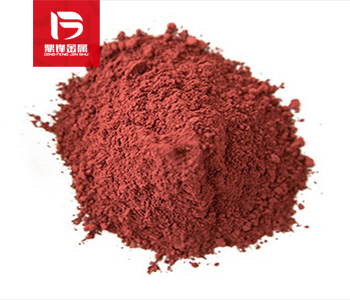
Palladium Nitrate Recycling
Palladium(II) nitrate is a kind of palladium catalyst with yellow brown powder appearance, also known as palladium nitrite or Palladium(II) nitrate. Palladium(II) nitrate is mainly used as a catalyst, commonly used as laboratory analytical reagent, oxidant, and separation of chlorine and iodine. As a raw material, it can produce various palladium compounds and palladium catalysts. Palladium(II) nitrate is also widely used as the bath solution for brewing palladium plating, as well as as the intermediate system catalyst or coupling catalyst in the pharmaceutical industry.
- Parameter
- Related Questions and Answers
-
Name : Palladium Nitrate
-
Use : Catalyst
-
Application Areas : Catalyst fields,Electronics Industry
-
Appearance and properties : Brownish red or dark red crystals
-
Settlement Method : On-site payment
-
Recycling Type : Palladium recycling
-
Door-to-door recycling:worldwide
-
Customer service: Free content testing and door-to-door recycling
Palladium Slag Recycling
Palladium slag is a byproduct or waste containing palladium element, usually generated during the extraction and processing of palladium metal. Palladium slag refers to the residue, waste or waste generated during the production or use of palladium metal, which contains compounds or mixtures of palladium elements.
Search : Palladium Slag RecyclingWaste Palladium Carbon Recycling
Palladium on Carbon (Pd/C) is a supported palladium catalyst in which palladium metal is loaded onto high-surface-area activated carbon. It appears as a black or dark gray powder and is widely used in organic synthesis, pharmaceuticals, petrochemicals, and environmental protection. Pd/C is known for its high catalytic efficiency, stability, and recoverability, making it an essential catalyst in various industries.
Search : Waste Palladium Carbon RecyclingPalladium Slurry Recycling
Palladium slurry is a fine-grained substance that contains high concentrations of palladium metal particles suspended in a solvent. These palladium particles have nanoscale or submicron size and typically exhibit a gray or black appearance. The preparation process of palladium slurry can be achieved through different methods, the most common of which is chemical synthesis.is a fine-grained substance that contains high concentrations of palladium metal particles suspended in a solvent. These palladium particles have nanoscale or submicron size and typically exhibit a gray or black appearance. The preparation process of palladium slurry can be achieved through different methods, the most common of which is chemical synthesis.
Search : Palladium Slurry RecyclingPalladium Sulfate Recycling
Palladium sulfate is a reddish brown palladium catalyst mainly used in electroplating and catalyst fields, as well as analytical reagents. Palladium sulfate has good catalytic activity and is generally used as a reagent, such as a debenzylation reagent. It is also a raw material for synthesizing and producing various palladium containing compounds and catalysts. A compound synthesized with palladium sulfate.
Search : Palladium Sulfate RecyclingProduct Details
Palladium(II) nitrate is a kind of palladium catalyst with yellow brown powder appearance, also known as palladium nitrite or Palladium(II) nitrate. Palladium(II) nitrate is mainly used as a catalyst, commonly used as laboratory analytical reagent, oxidant, and separation of chlorine and iodine. As a raw material, it can produce various palladium compounds and palladium catalysts. Palladium(II) nitrate is also widely used as the bath solution for brewing palladium plating, as well as as the intermediate system catalyst or coupling catalyst in the pharmaceutical industry. The three-way catalytic converter of the automobile uses Palladium(II) nitrate, and Palladium(II) nitrate solution is also used to prepare the precursor of automobile exhaust purification catalyst. The Palladium(II) nitrate solution used in the automobile industry contains about 15% palladium. When Palladium(II) nitrate is mixed with reducing agent, sulfur, phosphorus, etc., friction will cause explosion, so it cannot be stored together with organic matter, reducing agent, phosphorus mixture, etc. The storage conditions must be ventilated, dry at low temperature, and protective measures must be taken during use. Waste Palladium(II) nitrate is one of the sources of recovery of palladium containing noble metal catalysts. The sources of recovery of palladium containing noble metal catalysts also include Palladium(II) oxide recovery, Palladium(II) chloride recovery, Palladium(II) bromide recovery, palladium acetate recovery, Palladium(II) oxide hydrogen recovery, palladium sulfate recovery, etc. If you have any demand for the recycling of palladium containing precious metal catalyst waste, please call our 24-hour service hotline. Dingfeng Precious Metal Recycling and Refining Factory has its own recycling and refining factory without intermediaries to earn price differences. Our professional technical team and customer service personnel provide one-on-one services to ensure customer privacy during the recycling process.

